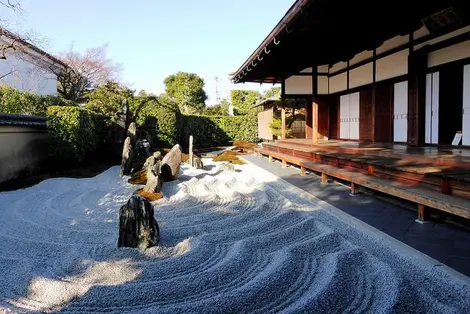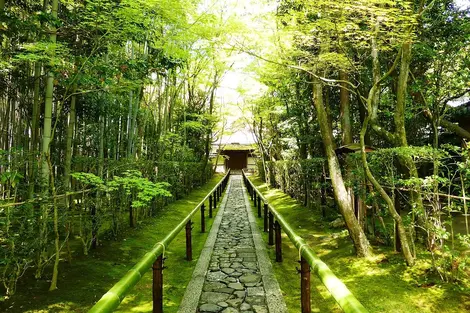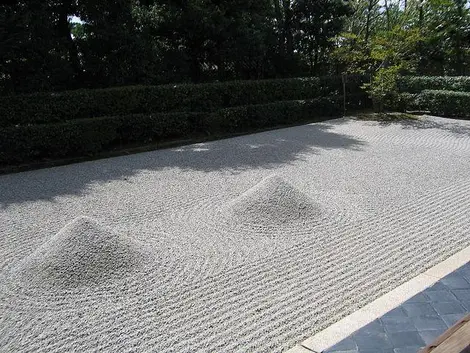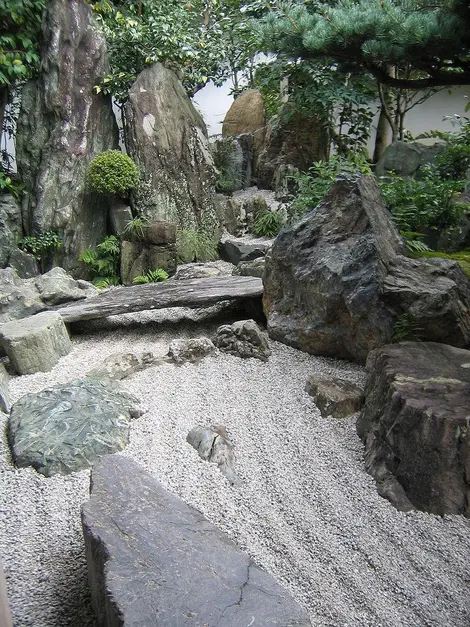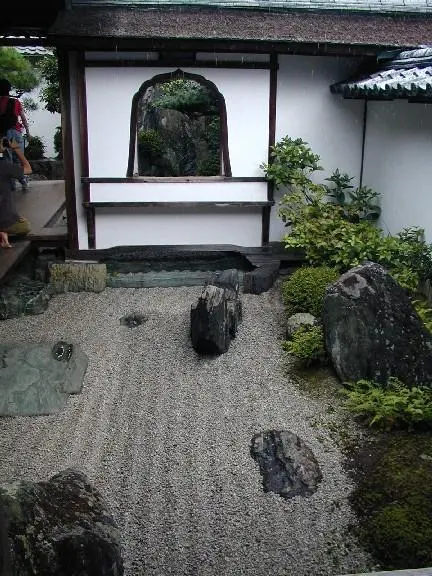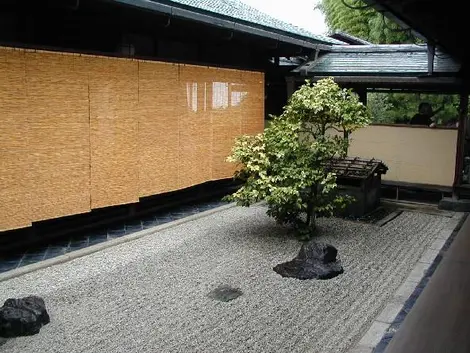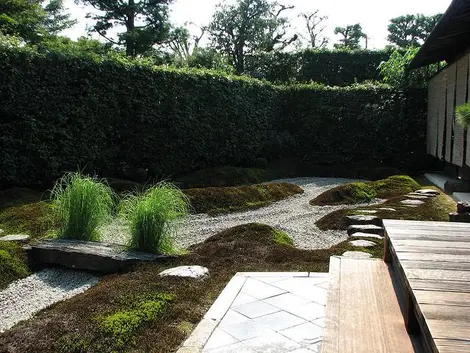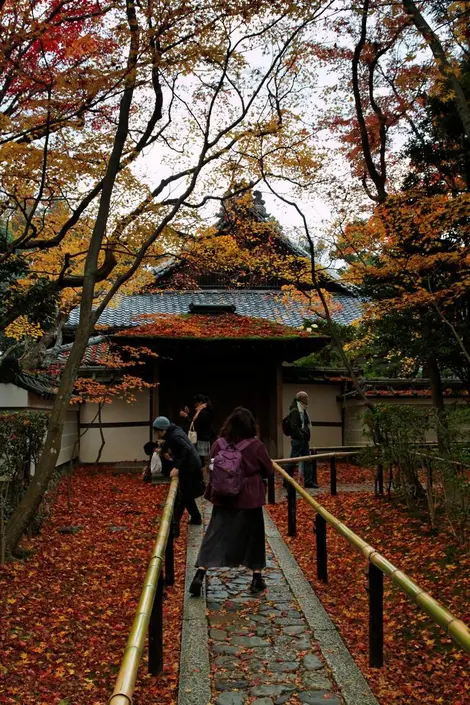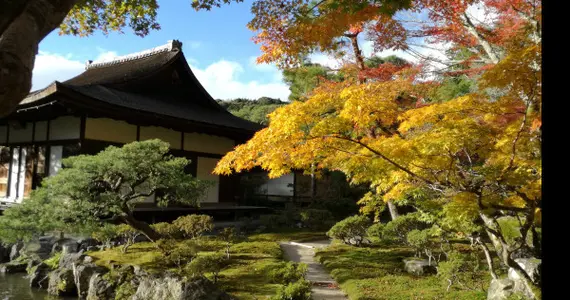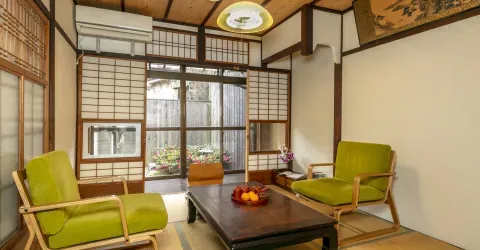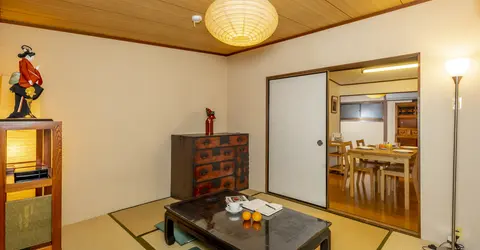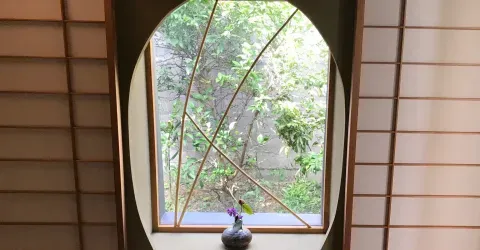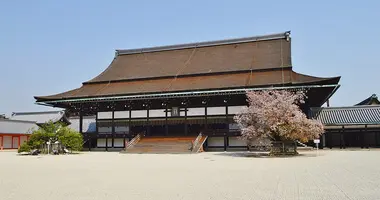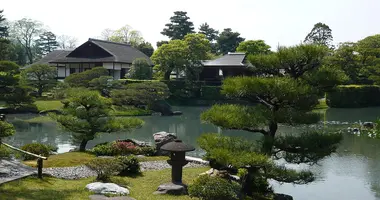The 3 most beautiful gardens of Daitoku-ji: Zuiho-in, Daisen-in and Koto-in 大徳寺の中でも最も美しい3つの庭園、瑞鳳院、大山院、江東院
- Published on : 28/12/2018
- by : J.R.
- Youtube
The Zen gardens of Daitoku-ji
North of Kyoto, the vast complex of Daitoku-ji host a large number of Zen temples. Among them, are the Zuiho-in, the Daisen-in, and the Koto-in. All splendid Japanese gardens, sometimes of stone, sometimes of moss...
The Daitoku-ji
Located north of Kyoto, not far from the Golden Pavilion, Daitoku-ji is a large Buddhist complex belonging to the Rinzai Zen school. Of the twenty or so temples it houses, four are open to the public. Away from the more famous temples and shrines in the east of the city, a visit to this complex and its many gardens is refreshing. Visitors in search of spirituality, fond of Japanese gardens, or eager to discover a more secret side of Kyoto will be delighted.
See also: The Zen temples of Kyoto
The site was founded in 1319 by Daito Kokushi, then partially destroyed in the 15th century during the Onin War. It was rebuilt gradually, over the centuries, thanks to many donors who established their secondary pavilions there. However, it is unfortunately not possible to visit the buildings of Daitoku-ji. Passing through, you can therefore only discover Ryogen-ji, Daisen-in, Zuiho-in, and Koto-in. These last three temples are home to small wonders: stone and moss gardens, as well as bamboo groves and forests.
The Daisen-in garden
Classified as a National Treasure of Japan, the Daisen-in has a magnificent stone garden ( karesansui), dating from the end of the Muromachi period (1336 - 1576), when the development of dry gardens was at its peak. The temple itself was built between 1509 and 1513 and its name means "The Academy of the Great Immortals". The development of the garden, as well as the painted panels located in the temple, are attributed to the monk Soami. This stone garden is divided into four parts. Interpretations of the symbolism of the garden differ according to specialists, the most common being that each zone illustrates a theme: the waterfall represents the beginning of life, the river illustrates the stages and trials of human existence, then the intermediate sea, and finally the ocean, marking the serenity of old age.
The Zuiho-in garden
The Zuiho-in is home to a large stone garden, which can be discovered along a pleasant path. The gravel laid out in concentric waves surrounds the rocks, laid out in a cross, about the Christian confession of the owner of the temple, Otomo, a military leader of the 16th century. It was the creator of the garden, Shigemori Mirei, who placed this cross in 1961.
The rocks arranged in this garden, called Dokuza-tei (which means "the garden where to sit alone"), represent islands and mountains in the middle of the water. In one corner, a large rock represents Mount Horai-Zan, from Taoist mythology. It is possible to enjoy a bowl of tea and settle down in front of this stone garden, for a Zen break in the greatest tranquility...
To discover: Recharging your batteries with Zen
The Koto-in
Finally, the Koto-in has a different garden. No gravel and rocks here: trees, moss, and bamboo surround the main building. Home to many maple trees, among other things, its visit is particularly famous in autumn during kôyô to admire the red leaves. The temple itself was founded in 1601 by the famous tea master Hosokawa Tadaoki.
The visit begins from the path leading to the entrance door of the temple: a beautifully paved alley lined with trees and bamboo, not to mention the apple green moss covering the ground... In autumn, this alley is covered with scarlet leaves, to the delight of photographers. The vegetation of the Koto-in is particularly luxuriant, which makes it a very original and refreshing garden. Arrived at the level of the main building, placed in the center of the garden, you can go around it to appreciate the dense forest which encircles it on four sides. All around, the mossy ground is carpeted with red leaves in autumn, which then forms a superb contrast much appreciated by the Japanese...
To read: Where to admire autumn in Kyoto
Plongez dans les jardins secrets de Kyoto avec un guide
Address, timetable & access
Address
Phone
+81 (0)75 491 0019Timetable
Daitokuji-mae stop on lines 12, 101, 102, 204, 205, and 206 then 2 min on footPrice
About 400 yen ($3.25/4€) for each templeAccess
Open from 9 am to 5 pm, until 4:30 pm from December to February



